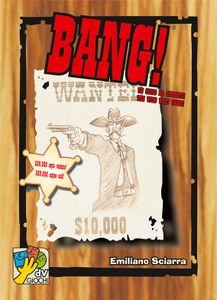BACKGROUND: Forbidden Desert is part of the Forbidden series of survival co-operative games. It is for 2-5 players, and was designed by Matt Leacock, artists C. B. Canga and Tyler Edlin, and published by Gamewright. By taking a role, players work together to collect all the pieces of the machine and fly out before they die.
/pic1667051.jpg)
GAMEPLAY: Each turn consists of a sequence of 2 events: A player may take up to any 4 combination of actions, and then Sandstorm cards are drawn. These actions consist of removing sand markers on their tile or any orthogonally (or any non diagonally) from them, moving orthogonally to a space with less than 2 sand markers on it, flipping face-up a sand free tile they are on, and picking up a part. At any point a player may share with another player water or items with a player they share a space with.
SANDSTORM: The 5 by 5 grid will always have an empty space, where the storm is. At the end of a turn, flip Sandstorm cards equal to the number on the Sandstorm Meter level, move the indicated number of tiles so that the 'storm' moves in the direction on the card, then place sand markers on the tiles moved. If the storm can't move, nothing happens. If a Storm Picks Up card is drawn, raise the Meter level, and draw that many cards next turn. If a Sun Beats Down card is drawn, all players lose a level of water on their cards.
/pic1792792.jpg)
END: Some tiles have arrows to determine where an Machine piece will end up being. Players must find all 8 'clue' tiles to find where the Machine pieces will be, gather them up, and get to the Launch Pad! tile. However, there are three ways to lose: If any player reaches the skull and crossbones on their canteen or the on the Sand Storm meter, or if there are no more sand markers to add to the board.
CONCLUSION: After reviewing Forbidden Island, and playing Forbidden Sky (expect a review on that one as well), I can confidently say that this is so far, my favorite version of the Forbidden series of games. The flow feels a lot better, without losing the struggle of obtaining victory. I would say the biggest problem I had was something a lot of co-op board games struggle with, and that's punishing a larger group than a smaller one. It would make sense to go through a game with a full party and win more often than with 2 or 3 players, but it always seems like the opposite happens. Still, this is a great game, and the best in the franchise, so go out and uncover your own copy today at your local game store.




/pic1904079.jpg)
/pic2257659.jpg)


/pic544131.jpg)
/pic1205455.jpg)